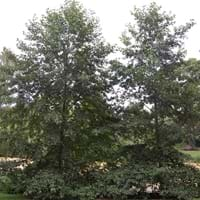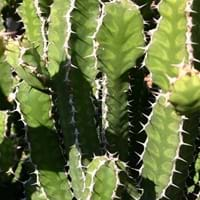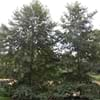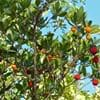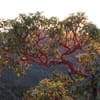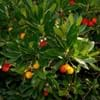Life Span
Perennial
Perennial
Origin
North America, United States, Northwestern United States, Alaska, California, Canada
Southern Africa, South Africa
Types
Not available
Not Available
Habitat
Lowland evergreen rainforest
Bushlands, Upland savannas
USDA Hardiness Zone
4-7
10-15
AHS Heat Zone
7-1
Not Available
Sunset Zone
3a, 3b, 4, 5, 6, 7, 14, 15, 16, 17
H1, H2, 13, 21, 22, 23, 24
Habit
Pyramidal
Upright/Erect
Flower Color
Yellow, Red, Coral
Light Yellow, Yellow green, Gold
Flower Color Modifier
Bicolor
Not Available
Fruit Color
Brown
Not Available
Leaf Color in Spring
Green, Dark Green
Not Available
Leaf Color in Summer
Dark Green
Not Available
Leaf Color in Fall
Dark Green
Not Available
Leaf Color in Winter
Not Available
Not Available
Leaf Shape
Ovate
Succulent
Plant Season
Spring, Summer, Fall
Spring, Summer, Fall, Winter
Sunlight
Full Sun, Partial Sun, Partial shade
Full Sun, Partial Sun, Partial shade
Type of Soil
Loam, Sand
Loam, Sand
The pH of Soil
Acidic, Neutral, Alkaline
Acidic, Neutral, Alkaline
Soil Drainage
Average
Well drained
Bloom Time
Early Spring
Spring, Late Spring
Tolerances
Maritime exposure, Salt water
Drought
Where to Plant?
Ground
Container, Ground, Pot
How to Plant?
Layering, Seedlings
Cuttings
Plant Maintenance
Medium
Medium
Watering Requirements
Average Water Needs
Needs very little water, occasional watering once established
In Summer
Lots of watering
Lots of watering
In Spring
Moderate
Moderate
In Winter
Average Water
Average Water
Soil pH
Acidic, Neutral, Alkaline
Acidic, Neutral, Alkaline
Soil Type
Loam, Sand
Loam, Sand
Soil Drainage Capacity
Average
Well drained
Sun Exposure
Full Sun, Partial Sun, Partial shade
Full Sun, Partial Sun, Partial shade
Pruning
Remove damaged leaves, Remove dead branches, Remove dead leaves
Remove damaged leaves, Remove dead branches, Remove dead leaves
Fertilizers
All-Purpose Liquid Fertilizer, Nitrogen
All-Purpose Liquid Fertilizer
Pests and Diseases
Not Available
Mealy bugs, Soft scales
Plant Tolerance
Maritime exposure, Salt water
Drought
Flowers
Insignificant
Insignificant
Flower Petal Number
Not Available
Single
Foliage Texture
Medium
Bold
Foliage Sheen
Glossy
Not Available
Attracts
Insects, Not Available
pollinators
Allergy
Not Available
Nausea, Skin irritation, Vomiting
Aesthetic Uses
Not Available
Ground Cover
Beauty Benefits
Skin Problems
Not Available
Environmental Uses
Air purification, Prevent Soil Erosion, Shadow Tree
Air purification
Medicinal Uses
Anodyne, Appetizer, Astringent
Asthma, Bronchitis, Diarrhea
Part of Plant Used
Flowers, Inner Bark, Sap
Sap
Other Uses
Used as a dye, used for making charcoal, Used for making informal hedge
Container, useful as a ground cover
Used As Indoor Plant
No
Yes
Used As Outdoor Plant
Yes
Yes
Garden Design
Screening / Wind Break, Shade Trees
Container, Feature Plant, Houseplant, Rock Garden, Wall
Botanical Name
ALNUS rubra
Euphorbia pseudocactus
Common Name
Oregon Alder, Red Alder
Tiger Tree
In Hindi
red alder
टाइगर ट्री
In German
rot-Erle
Tiger Tree
In French
aulne rouge
Tiger Tree
In Spanish
aliso rojo
Tiger Tree
In Greek
κόκκινη σκλήθρα
Tiger Tree
In Portuguese
amieiro vermelho
Tiger Tree
In Polish
czerwony olcha
Tiger Tree
In Latin
red alnus
tigris lignum
Phylum
Magnoliophyta
Magnoliophyta
Class
Magnoliopsida
Magnoliopsida
Order
Fagales
Malpighiales
Family
Betulaceae
Euphorbiaceae
Clade
Angiosperms, Eudicots, Rosids
Angiosperms, Eudicots, Rosids
Tribe
Not Available
Euphorbieae
Subfamily
Not Available
Euphorbioideae
Importance of Red Alder and Tiger Tree
Want to have the most appropriate plant for your garden? You might want to know the importance of Red Alder and Tiger Tree. Basically, these two plants vary in many aspects. Compare Red Alder and Tiger Tree as they differ in many characteristics such as their life, care, benefits, facts, etc. Every gardener must at least have the slightest clue about the plants he wants to plant in his garden. Compare their benefits, which differ in many ways like facts and uses. The medicinal use of Red Alder is Anodyne, Appetizer and Astringent whereas of Tiger Tree is Asthma, Bronchitis and Diarrhea. Red Alder has beauty benefits as follows: Skin Problems while Tiger Tree has beauty benefits as follows: Skin Problems.
Compare Facts of Red Alder vs Tiger Tree
How to choose the best garden plant for your garden depending upon its facts? Here garden plant comparison will help you to solve this query. Compare the facts of Red Alder vs Tiger Tree and know which one to choose. As garden plants have benefits and other uses, allergy is also a major drawback of plants for some people. Allergic reactions of Red Alder are Not Available whereas of Tiger Tree have Nausea, Skin irritation and Vomiting respectively. Having a fruit bearing plant in your garden can be a plus point of your garden. Red Alder has showy fruits and Tiger Tree has no showy fruits. Also Red Alder is not flowering and Tiger Tree is not flowering . You can compare Red Alder and Tiger Tree facts and facts of other plants too.
